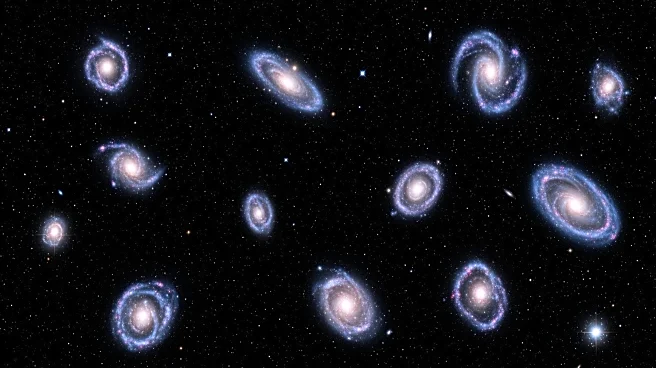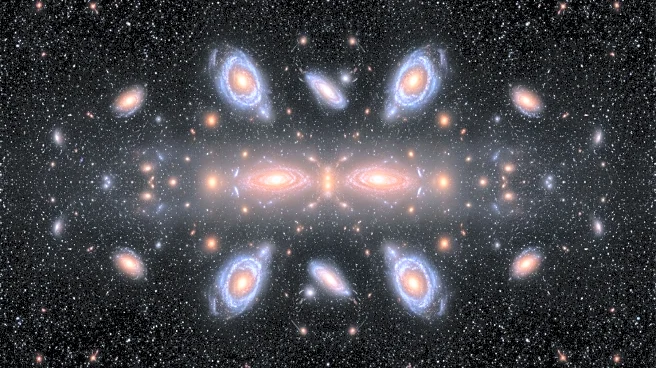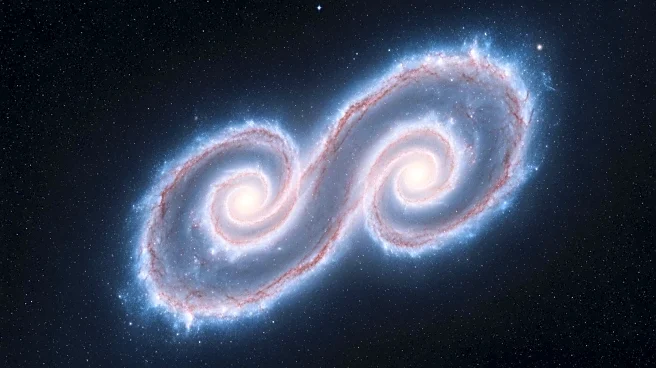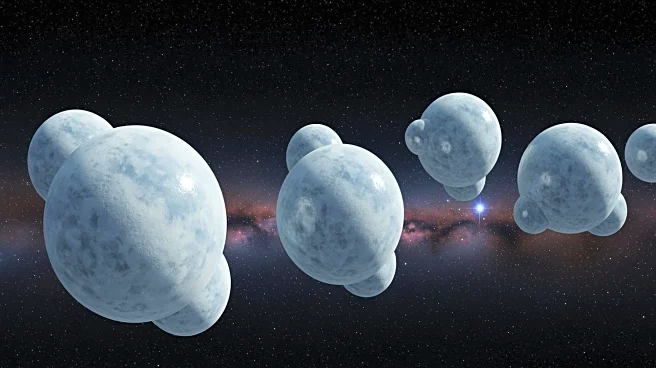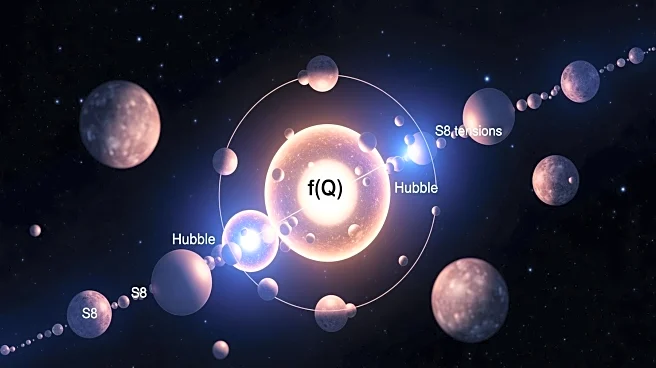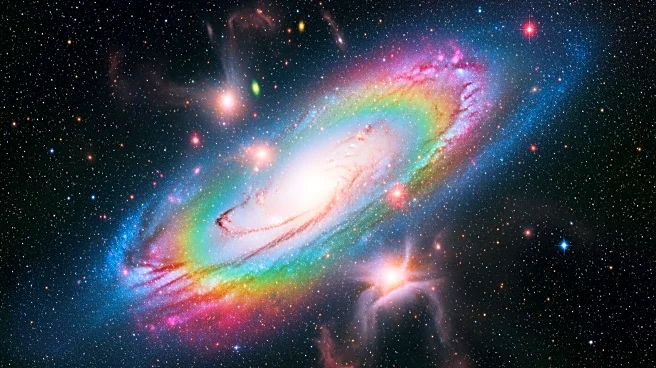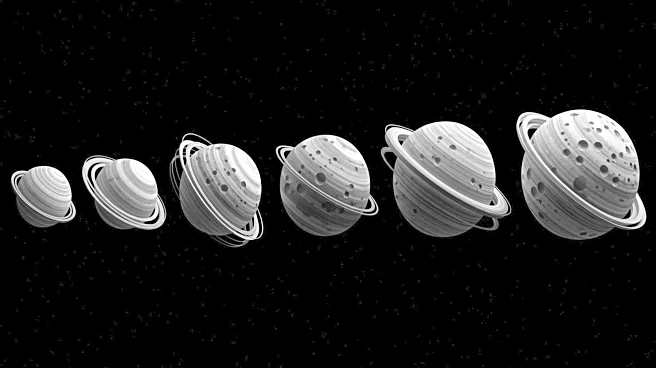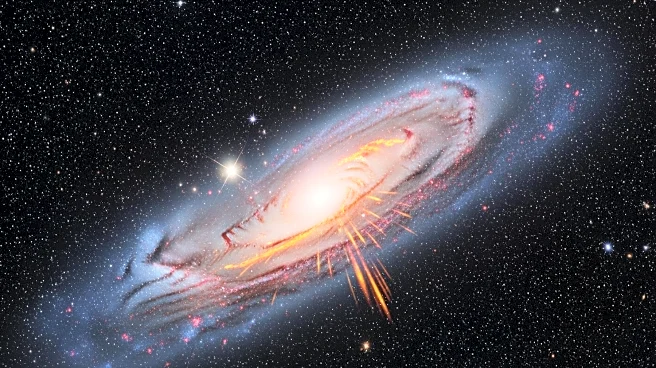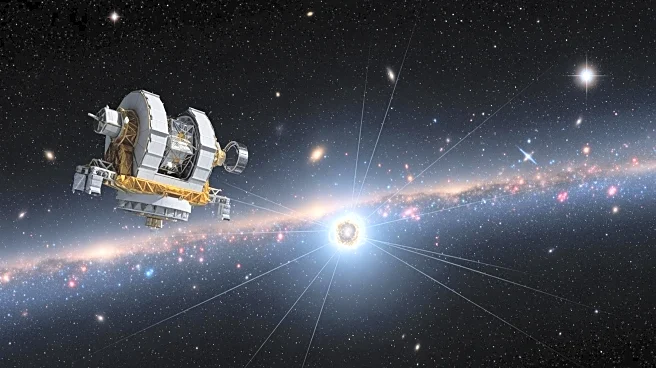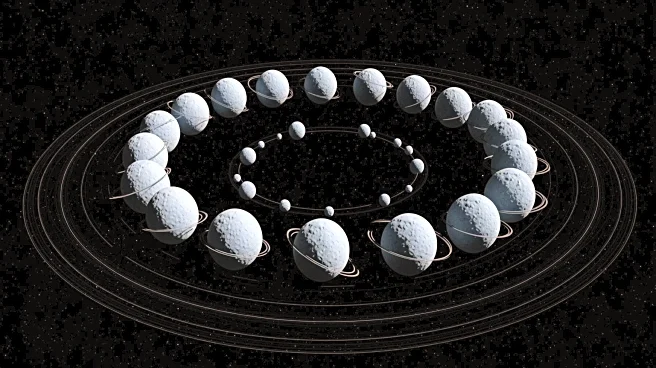What's Happening?
Astronomers have unveiled the largest-ever catalog of galaxy clusters, compiled using data from the Dark Energy Survey (DES). This catalog provides new insights into the evolution of the universe and the distribution
of dark matter and dark energy. Galaxy clusters, which are the largest gravitationally bound structures in the universe, serve as cosmic signposts for tracing these mysterious forces. The DES used the Dark Energy Camera to collect data over six years, revealing tens of thousands of clusters spanning billions of light-years.
Why It's Important?
The catalog is a powerful tool for testing cosmological models, particularly the Lambda-Cold Dark Matter (LCDM) model, which describes the universe's behavior. It addresses the 'S8 tension,' a mild mismatch between observed and predicted matter clumping. Understanding the distribution of dark matter and dark energy is crucial for comprehending the universe's accelerated expansion and the forces shaping cosmic structures.
What's Next?
Future telescopes like the Vera C. Rubin Observatory and NASA’s Nancy Grace Roman Space Telescope will expand the catalog, providing deeper insights into the universe's history. These observatories will help track the formation of clusters across more of cosmic time, enhancing our understanding of dark matter and dark energy.
Beyond the Headlines
The catalog's creation required careful modeling of cluster overlap and mass estimation. It highlights the challenges and opportunities in studying the universe's largest structures and the forces that govern them.
